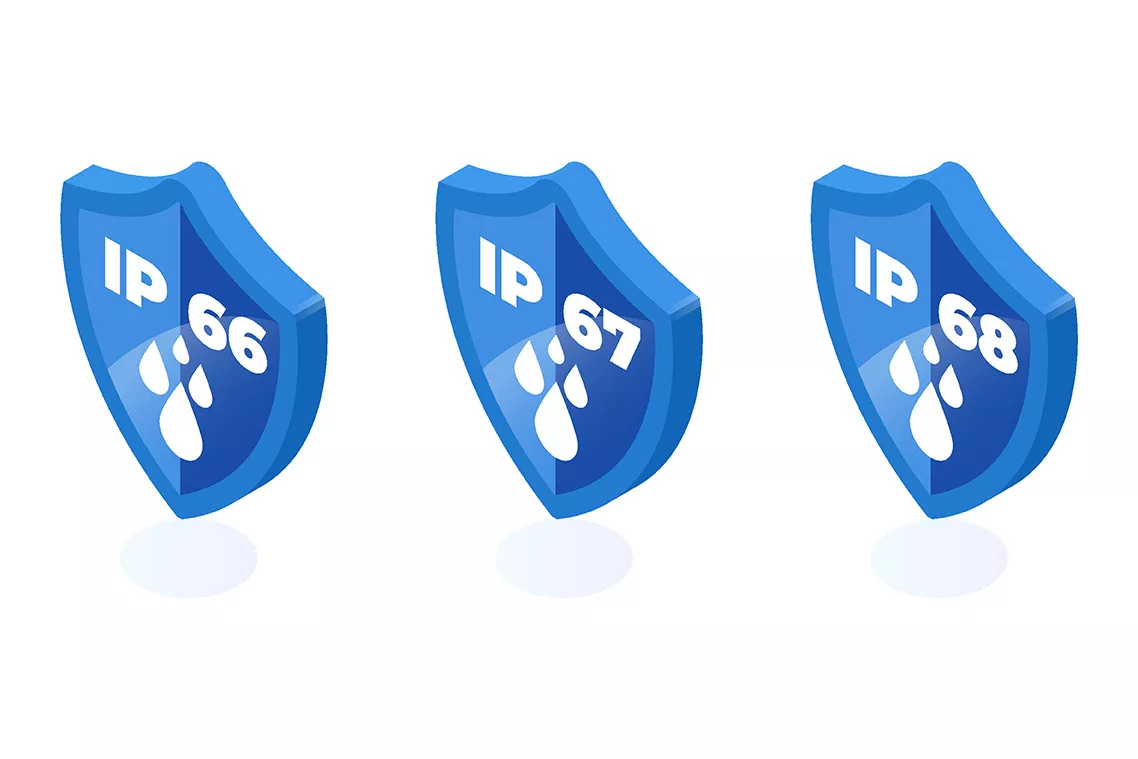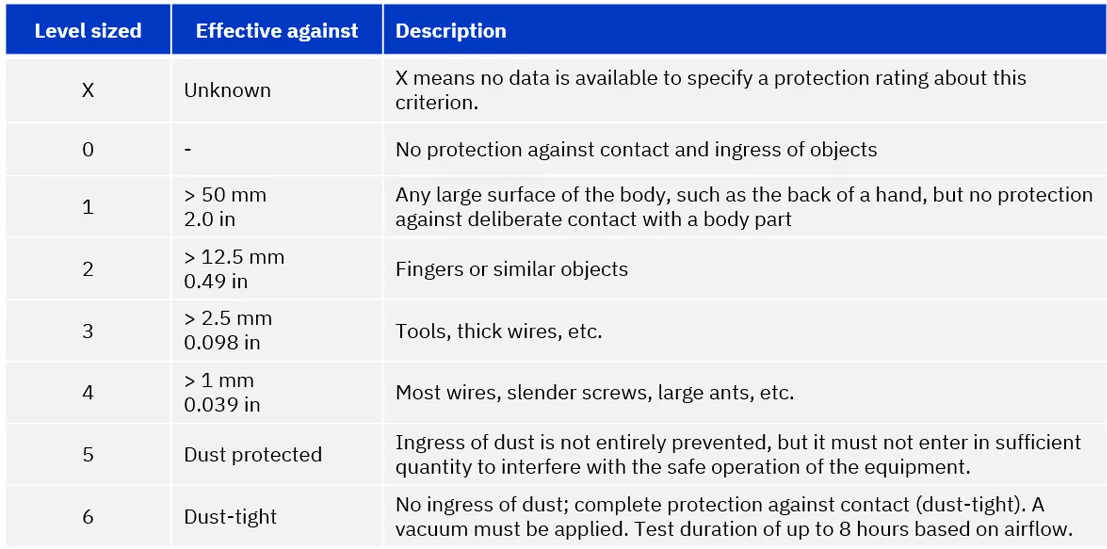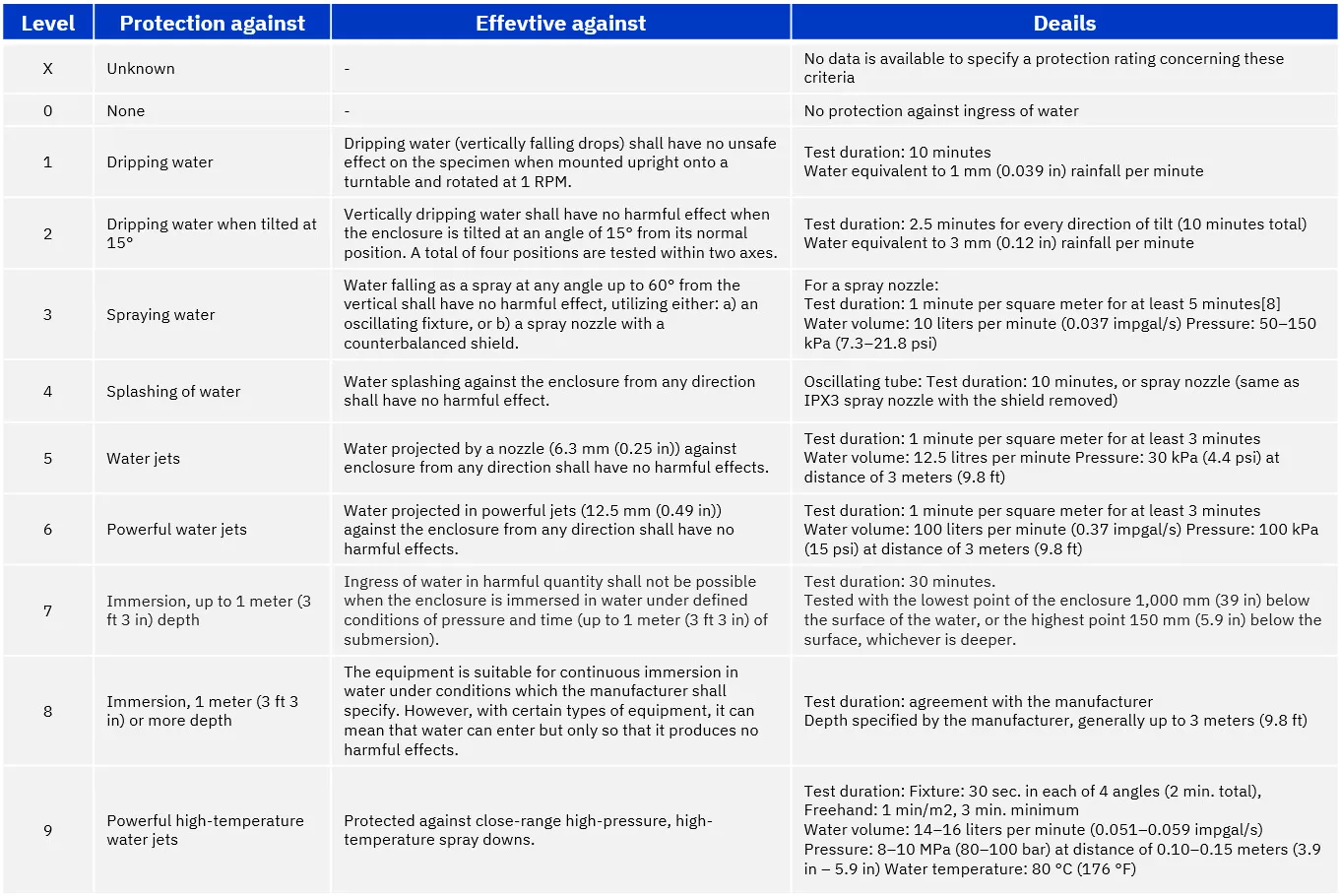When looking at electric and electronic equipment you can often find a protection code starting with IP and ending with two digits in the product information. But what does this mean and against what does it protect the products?
Ip, or Ingress Protection, is developed by the International Electrotechnical Commission to show the grade of protection against intrusion of dust and liquids for electronic devices. These ratings are widely used in many industries and are often seen as a sign of product quality.

When it comes to water and dust proof products, it is hard to determine to what level they are actually protecting the device. Many items get marketed as waterproof or water-resistant when these terms are just vague marketing statements. Therefore, IEC 60529 has been developed to rate and grade the resistance of enclosure of electric and electronic devices against intrusion of dust and liquids. Plus, access to potentially hazardous parts within the enclosure for individuals is also rated.
The IP code is composed of first the capital letters IP and then two digits. These two numbers both have a different meaning when looking at the protection level. The first number shows refers to the protection against solid objects and is rated on a scale of 0 to 6. This 0 stands for no protection, whilst 6 stands for ingression of dust. The second digit rates the enclosure’s protection against liquids and scales from 0, being no protection, to 9, high pressure hot water different angle protection.

The numerals in between the first 0 to 6 rating and the second 0 to 9 rating are deciding the degree to which the device is protected. The table below shows the degree of protection each number gives.
All IP ratings cover an enormous range of electrical enclosures and their protections. The most commonly found IP ratings are 65, 66, 67 and 68. These ratings all provide a protection against the ingression of dust and pretty solid protection against liquids. For many electronic devices in a wide range of applications, these ratings provide great protection.

The IEC standard used the IP code to determine the degrees of protection offered by the enclosure of electrical equipment with a rated voltage of a maximum of 72,5 kV. In addition, this standards shows the tests that need to be performed to verify that the enclosure meets these requirements.
IEC 60529 published their first edition in 1976 and tried to create one document to bring together all requirements regarding enclosure protection ratings. However, this did not work out. Previously, separate editions have been created to display standards for motors, low voltage and intrinsically safe devices and control gear.
For a full description on all IP ratings, testing conditions and other regulations, please refer to IEC 60529.
Further links:
https://webstore.iec.ch/en/pub...
https://www.enclosurecompany.com/ip-ratings-explained.php
https://www.iec.ch/ip-ratings


